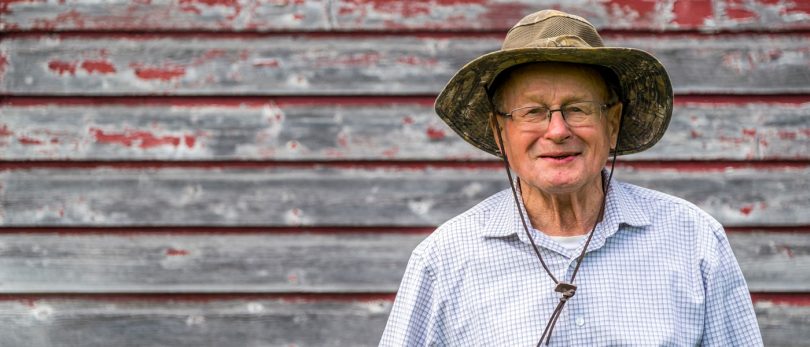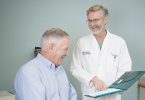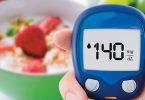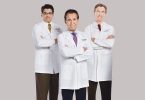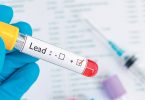Richard Krach, an energetic 83-year old retiree with Type 2 diabetes, climbs into his camo Gator four-wheeler almost every day and zips around his 50-acre farm in Cozeville. Surveying his land brings Krach happiness, although just six months ago, he was parked inside his home — unable to get out and about.
His diabetes, coupled with arterial obstruction, led to a chronic foot wound that eventually required amputating several toes. Immediately following the procedure, in February 2016, Mr. Krach’s surgeon referred him to the UHS Center for Advanced Wound Care.
“The pain was unbelievable,” Mr. Krach recalls. “Today I’m about 80 percent healed and rarely have any pain. The thing to remember is that healing a wound like mine takes time. But I’m better every day and without the hyperbaric chamber, I would probably still be a long way from recovery.”
Breathe Easy
Hyperbaric oxygen therapy (HBOT), one of the center’s many advanced modalities to promote wound healing, involves a patient lying in a clear acrylic, tube-like chamber and breathing in pure oxygen, with the chamber’s air pressure raised two to three times higher than regular atmospheric pressure. This results in blood plasma oxygen concentrations 10 to 15 times greater than normal, which in turn increases the amount of oxygen flowing to damaged wound tissues and ultimately speeds up the healing process.
Research suggests that new HBOT medical applications are on the horizon. At this point, however, HBOT is most often used to treat three types of chronic, non-healing wounds:
- Diabetic wounds of the lower extremity
- Damaged tissue due to radiation treatments
- Compromised skin flaps and grafts
The Path to Healing
Each year, it’s estimated that around seven million Americans suffer some form of chronic wound that has not healed on its own within 30 days. As Mr. Krach describes, these wounds are not only painful but can lead to restricted daily activities, decreased quality of life and, if left untreated, amputation.
“There are many reasons why a wound won’t heal, although most often it’s due to diabetes or inadequate blood flow,” says Ann Semo, RN, nurse manager at the UHS Center for Advanced Wound Care. “Some wounds take longer than others to heal, but we’re persistent. And when necessary, we work with our vascular surgeons to help prevent future wounds.”
The most common non-healing wounds treated at UHS include:
- Diabetes-related wounds
- Venous and arterial ulcers resulting from restricted blood flow
- Surgical wounds that won’t heal
- Pressure ulcers, triggered by reduced blood flow to a specific body area
“We also see burns, traumatic wounds and infections. Although an underlying condition — such as diabetes, arterial issues or venous disease — is usually the root problem,” says Ms. Semo.
START HEALING
The UHS Center for Advanced Wound Care is on the UHS Binghamton General Hospital campus. Call 762-3131 for an appointment.
Centered on Recovery
Selecting the best treatment plan for an individual patient begins with an in-depth, 90-minute patient evaluation, explains Ellin Ede, program director at the UHS Center for Advanced Wound Care. “We build a unique wound profile, considering everything from patient input to test results that help us assess why a wound isn’t healing.”
After the initial visit, center physicians and nurses certified in wound care select a treatment plan, then every patient is scheduled for weekly checkups. At each visit, the wound is inspected, measured and photographed to document progress. In addition, the wound is cleaned by debridement, which entails removing dead and damaged tissue. “This stimulates the wound bed and wakes up the natural healing process,” Ms. Semo says.
“If the wound isn’t 50 percent healed by week four, we talk about alternatives, which might mean a direction change or adding supplementary treatments,” Ms. Ede says. “It’s a lot of hands-on, personalized attention.”
In addition to HBOT, the advanced, evidence-based protocols and therapies that UHS wound care specialists offer include:
- Compression Therapy: A bandage wrap compresses tissue around the wound, reduces swelling and promotes healing blood flow to the wound.
- Unna Boot: A foot or lower leg wound is wrapped in gauze infused with medications and then covered with a compression wrap. The medications promote healing while the compression helps improve circulation.
- Negative Pressure Wound Therapy: A therapeutic vacuum pump creates a negative pressure environment to draw out fluids and waste materials, increase blood flow to the wound, help pull wound edges together and promote healing at the cellular level.
- Bio-engineered Grafts: Artificial skin pads are placed on a wound and held steady with bandages. The pads function like skin grafts, stimulating the patient’s own skin cells to multiply and heal the wound by delivering nutrients and proteins.
There is no one-size-fits-all treatment, Ms. Ede stresses. “We take a very personal approach to each patient. No one ever feels like they’re coming in weekly to just have their dressing changed,” she says. “We take care of the whole patient.”
EASY ACCESS
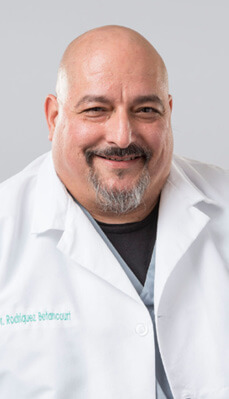 Patients in the Delaware Valley area who suffer non-healing wounds can start their road to recovery at UHS Primary Care – Walton, where family physician Luis Rodriguez-Betancourt, MD, provides wound care treatment in addition to primary care.
Patients in the Delaware Valley area who suffer non-healing wounds can start their road to recovery at UHS Primary Care – Walton, where family physician Luis Rodriguez-Betancourt, MD, provides wound care treatment in addition to primary care.
Dr. Rodriguez can assess non-healing wounds and jumpstart the healing process. Often, the patient can be treated close to home with the methods Dr. Rodriguez can provide. If a specific advanced modality is required, Dr. Rodriguez refers patients to the UHS Center for Advanced Wound Care before any further complications evolve.
“Many patients come to us for wound care because they are our primary care patient and they understand that we treat the whole patient. Because we take a very personal approach to our patients’ healthcare, there are few wounds we haven’t been able to heal,” Dr. Rodriguez explains. “But if we can’t resolve a wound issue, being part of the UHS system gives our patients immediate access to the right expert at the right time.”
CLOSE TO HOME …
Dr. Rodriguez-Betancourt sees wound care patients at UHS Primary Care – Walton and can be reached at 865-2400.

